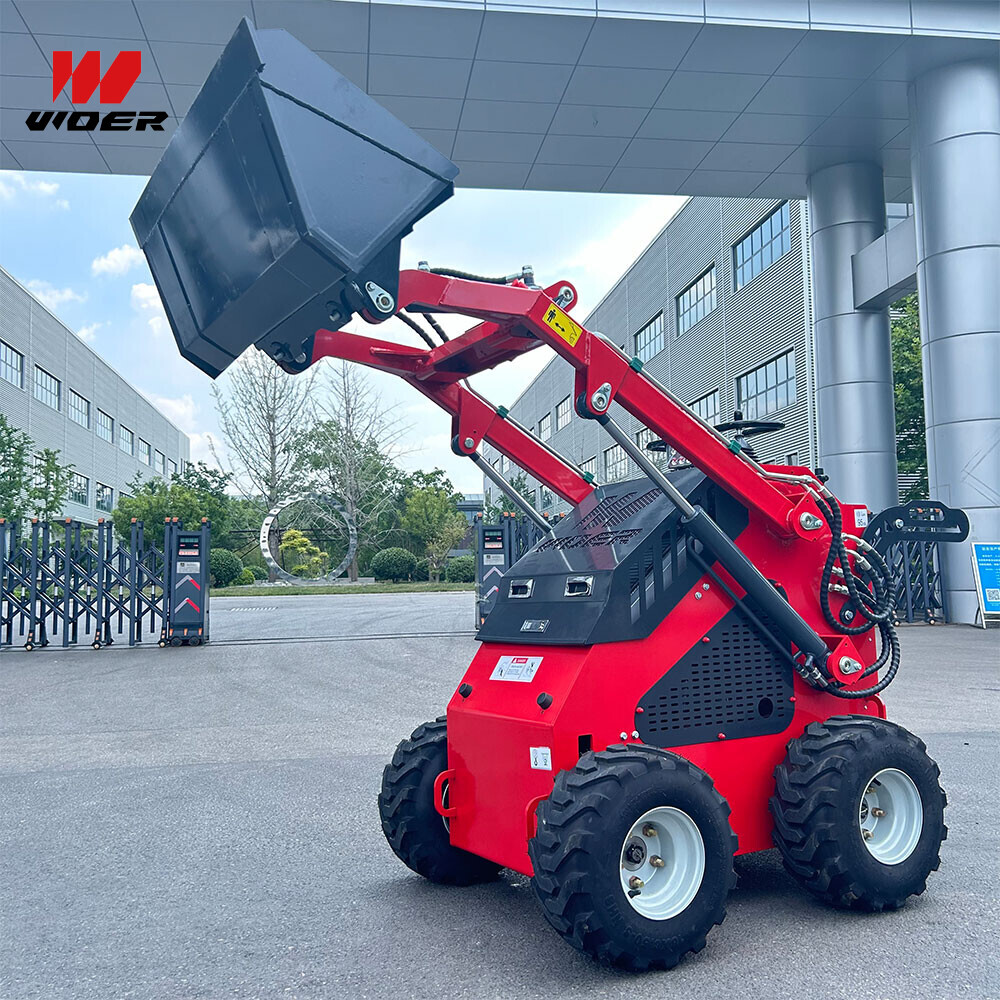Navigation
Contact us
Phone
Message

Wheeled vs. Tracked: A Comprehensive Guide to Selecting Skid Steer Loaders
Overview of Wheeled and Tracked Skid-Steer Loaders
(I) Wheeled Skid-Steer Loaders
A wheeled skid-steer loader achieves steering by utilizing the linear speed differential between its wheels. It is a type of engineering equipment with high maneuverability and travel speed. Its design makes it suitable for heavy-load operations in complex working conditions such as mining, forestry, and farmland, and it performs particularly well in environments with varying terrain.
The significant advantages of this type of machine include: a large track contact area and low ground contact pressure, enabling stable operation in soft or muddy soils without sinking or slipping. Its excellent gradeability allows it to easily handle steep slopes. It also offers excellent stability and traction, meeting the requirements of high-stability operations.
However, wheeled skid-steer loaders also have limitations: their relatively slow travel speed leads to high track wear and maintenance costs. Furthermore, when operating on hard surfaces, the tracks may cause some damage to the surface.
(II) Crawler Skid Steer Loaders
Crawler skid steer loaders utilize a crawler-type travel mechanism, offering enhanced off-road performance and load-bearing capacity. They are also suitable for heavy-duty operations in complex environments such as mines, forests, and farmland.
Their core advantages include: a large track contact area and low ground contact pressure, providing excellent maneuverability and stability on soft or muddy terrain; excellent gradeability, making them capable of navigating steep slopes; and superior stability and traction, making them suitable for applications requiring high stability.
However, this model also has certain disadvantages: slow travel speeds, high track wear and maintenance costs, and the potential for track damage when operating on hard surfaces.
(III) Usage Precautions
Key Points for Using a Wheeled Skid Steer Loader
Surface Conditions: Operate on hard, flat surfaces whenever possible. Avoid prolonged operation on wet, muddy, or soft soil to prevent sinking or slipping. If operating on such surfaces is unavoidable, consider installing auxiliary equipment such as anti-skid chains. Tire Maintenance: Regularly check tire pressure and wear to ensure they are in good condition. Replace excessively worn tires promptly to ensure safe and stable operation.
Operating in Special Environments: Special solid tires can be used in high-temperature environments. In dusty environments, seals and protective measures should be implemented for the engine and intake system.
Key Points for Using a Tracked Skid Steer Loader
Track Tensioning: Regularly check the track tension to ensure it is properly maintained. Too loose may cause the track to fall off, while too tight will increase wear and power consumption.
Track Cleaning: After work, clean the tracks of dirt, debris, etc. to reduce wear and corrosion.
Terrain Adaptation: Before entering the work site, fully understand the terrain conditions. Avoid sharp turns on hard surfaces to minimize the risk of track damage.

This stunning beach house property is a true oasis, nestled in a serene coastal community with direct access to the beach.
Contact
West Street, Melbourne Victoria 3000 Australia